
Conversion rate benchmarks tell you on average how many leads convert into opportunities or qualified meetings.
For example, one important conversion metric in our industry is the conversion rate from form fill to meeting held.
But one thing is clear. Most online marketers are interested in conversion rates, and understanding if the rates they’re seeing are aligned with industry benchmarks.
Knowing how you stack up is important, because having a baseline understanding lets you know if you’re on pace with, ahead of, or behind the competition.
Here are current conversion rate benchmarks, along with helpful advice on how to capitalize on a higher percentage of your leads.
Conversion Rate Benchmarks for Websites
Let me start off by saying there are a ton of variables that determine each company’s website conversion rate.
- Page load time
- Mobile optimization (or the lack thereof)
- Site navigation
- UX design
- Website aesthetics
- Copywriting
- SEO
- Speed to lead? Forms? Other things CP helps with?
Also, the conversion rate can vary considerably from industry to industry.
So, there are a lot of factors at play when determining what the ultimate conversion rate is.
That said, a comprehensive study by WordStream pinpointed exactly what the average conversion is for all B2B companies across the board.
It is…drumroll…
2.23%.
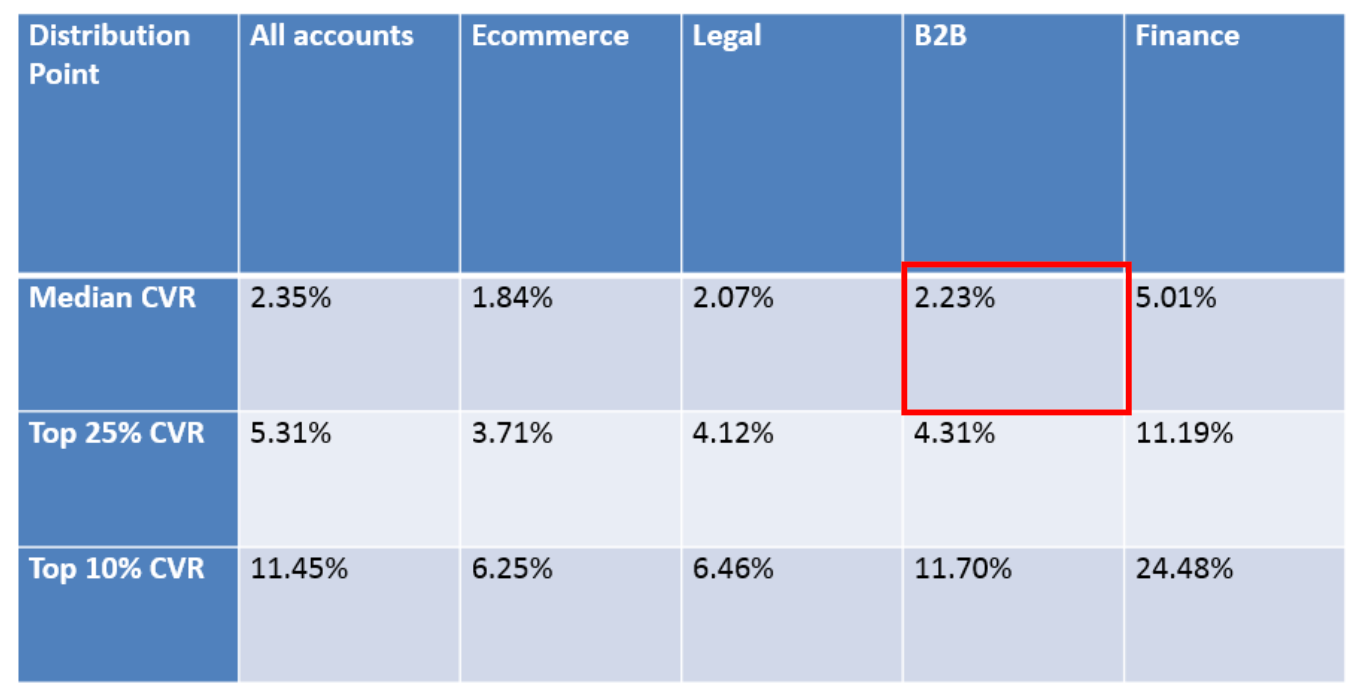
That’s the median conversion rate for all companies collectively within the B2B sphere.
Conversion Rate Benchmarks for the Top 25% of Companies
But the data doesn’t end there.
Wordstream also identified the average conversion rate for B2B companies in the top 25 percentile, and that number is 4.31%

That’s 2.08% higher than the 2.23% that B2B companies have across the board.
Conversion Rate Benchmarks for the Top 10% of Companies
And here’s what I found really interesting.
The average conversion rate of the best of the best B2Bs in the top 10% is a staggering 11.70%!
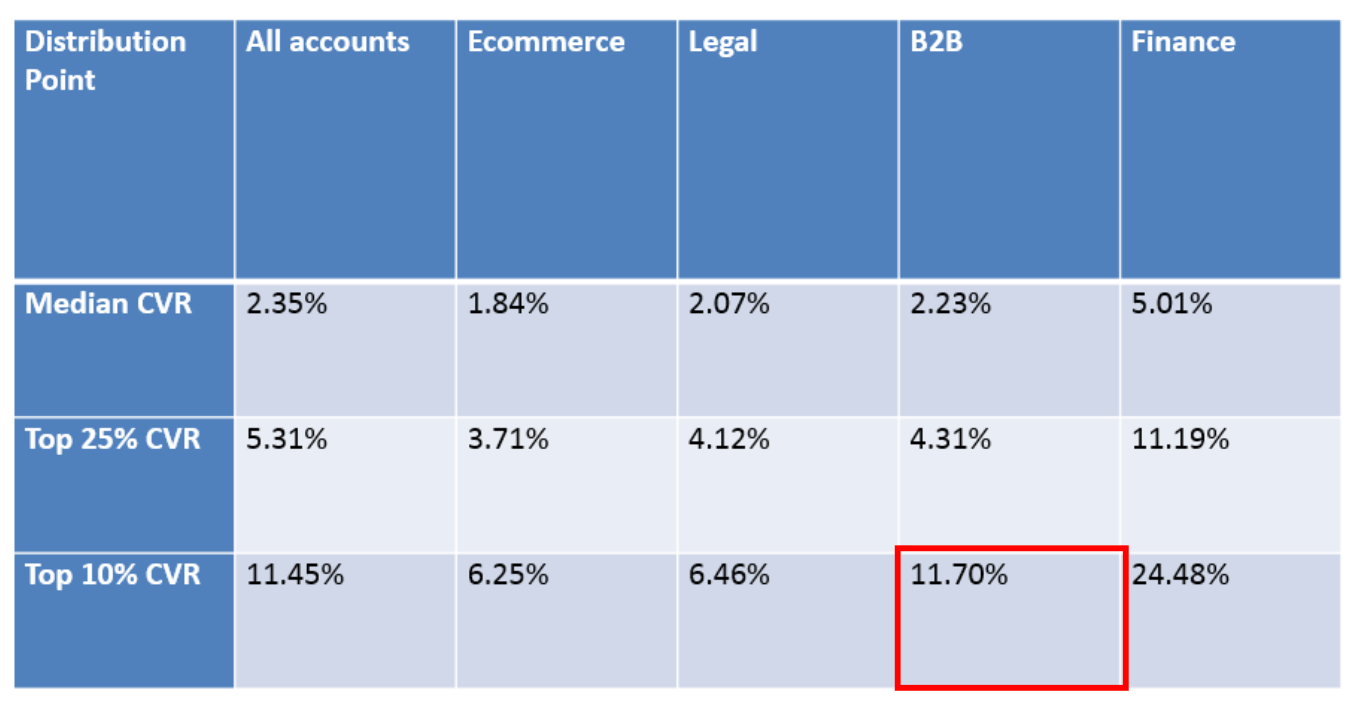
That’s 9.47% higher than the overall average of 2.23% and means that these elite brands get more than five times the conversions of most other brands.
Let’s Recap
The median conversion rate for all B2Bs is 2.23%.
So, if you’re hitting that number it means you’re on pace with average competitors.
If, however, your conversion rate is lower than that — especially if it’s under 2% — there’s definitely a problem and you need to swiftly fix any leaky holes in your sales funnel.
The top 25% of B2Bs have an average conversion rate of 4.31%, which is nearly double of those hitting the median.
If your conversion rate is hovering somewhere around this mark, you’re outperforming the vast majority of your competitors.
In this case, your sales funnel is rock solid and just fine.
Continual optimization is always smart and could potentially raise your conversions even more, but you’re definitely good to go and whatever formula you’re using is clearly working.
The conversion rate for the top 10% of B2Bs is 11.70%, which is crazy high, and you really can’t ask for much better than that.
Sure, a few tweaks here and there could raise it, but you’re already killing the game and should give your entire sales team a pat on the back.
Conversion Rate Benchmarks for Desktop, Tablet, and Mobile
It should also be noted that there’s a significant disparity between conversion rate benchmarks between different devices — something that should be taken into account when determining how effective your sales and marketing efforts are.
The most current data out there is from Statista, which found:
- The average conversion rate for desktops is 4.14%
- Tablets is 3.36%
- Mobile phones is 1.53%
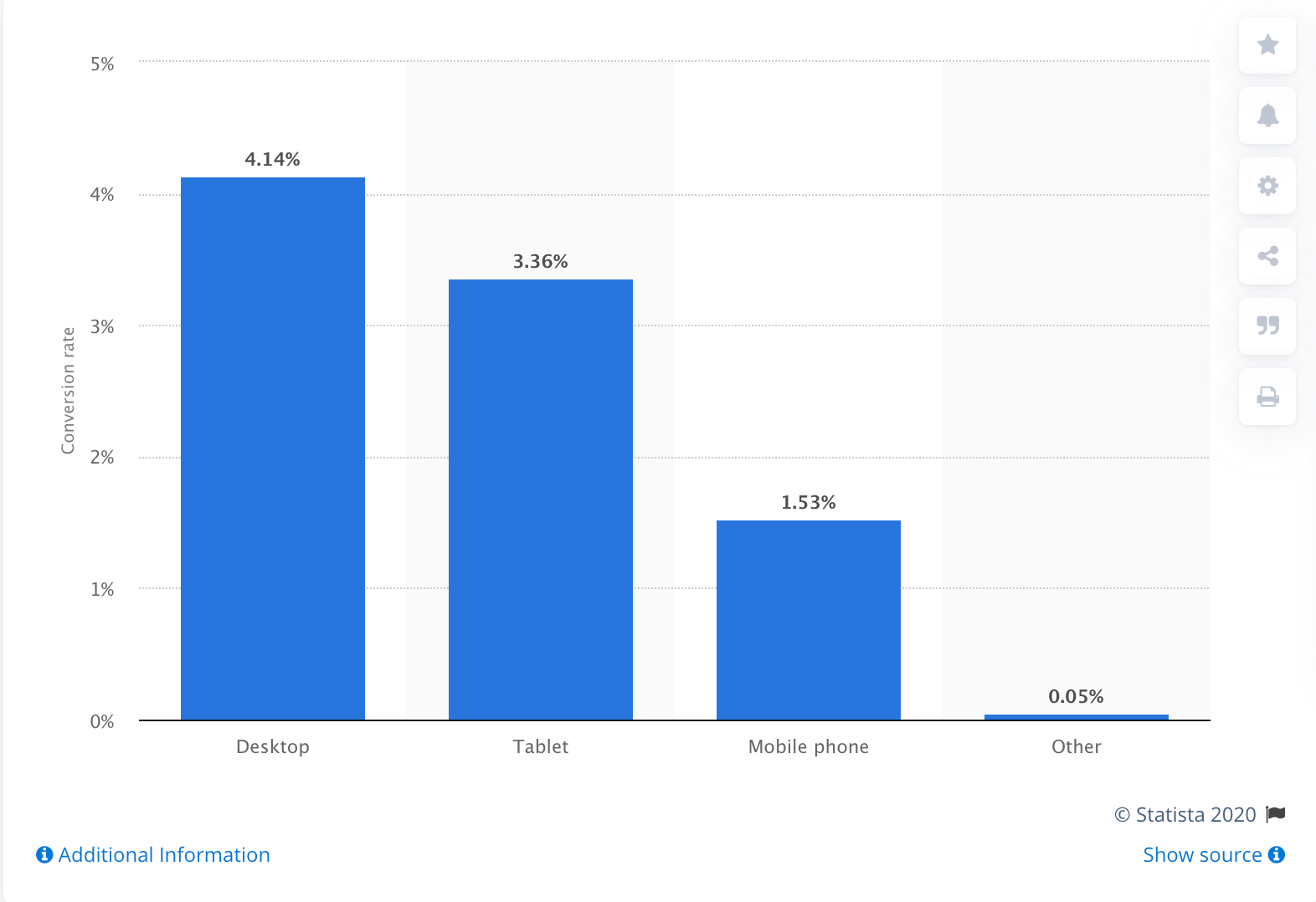
What’s the primary reason for this gap?
It mainly boils down to screen size.
“On average, a mobile device has a screen size of only 4.7 inches, while a typical desktop screen measures 15.6 inches,” says Sam Selders of WebpageFX. “While correlation doesn’t always imply causation, we can reasonably assume that screen size does play a role in conversion rates.”
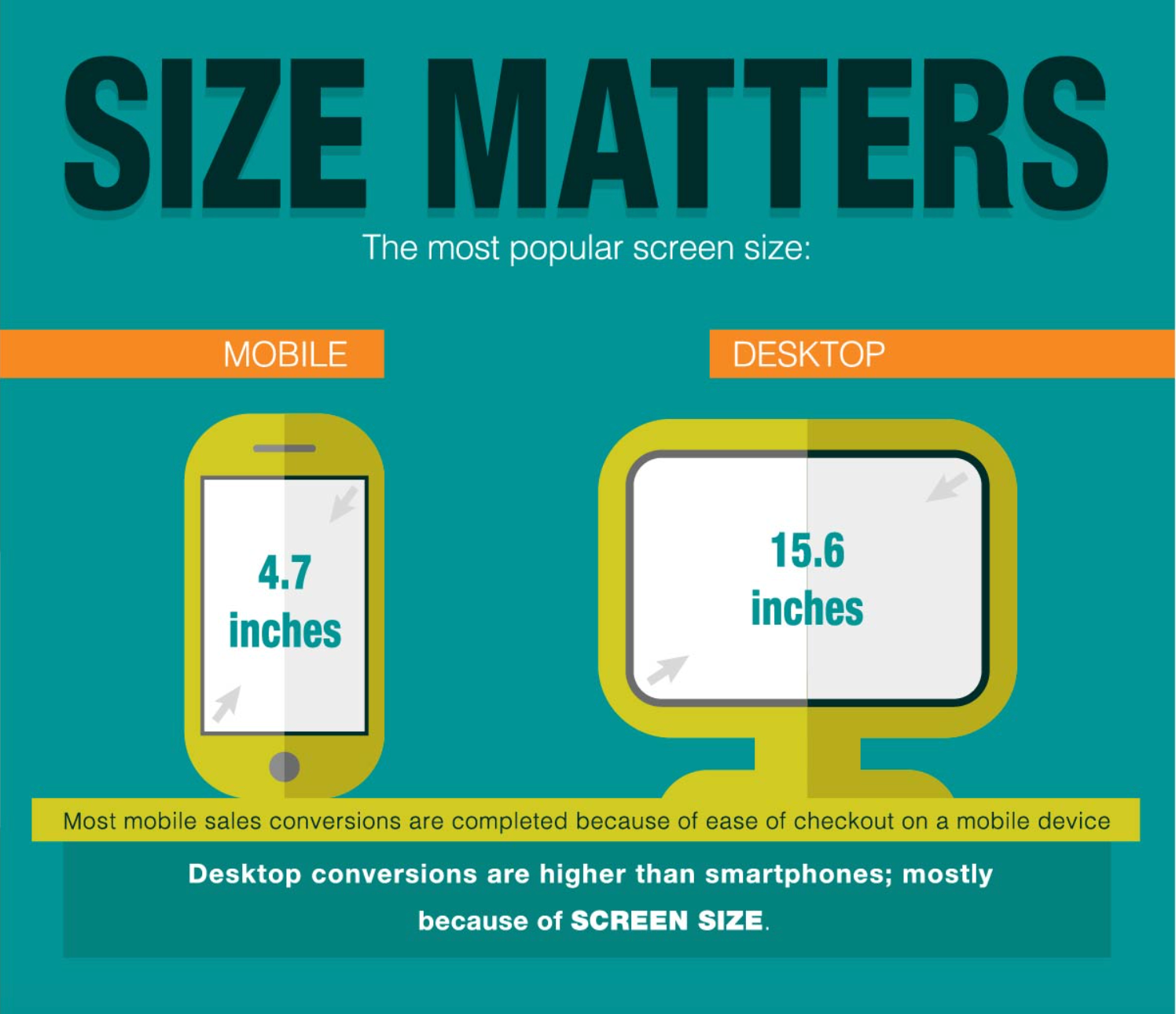
Studies have also found that mobile devices are primarily used for doing research on products and not so much for making actual purchases.
Say a B2B prospect is interested in buying a SaaS platform.
Often they’ll do a Google search, check out the product page, pricing, etc. on their phone and come back later to buy it on a desktop.
I’m not going to get into all of the gory details as to why conversion rates are higher on desktop than they are on mobile, but that’s the basic logic behind it.
The bottom line is that 4.14% for desktops, 3.36% for tablets, and 1.53% for smartphones are pretty good baseline conversion rate benchmarks, which should give you an idea of how your company stacks up to the competition.
Conversion Rate Benchmarks for PPC
The final type of benchmark I’m going to discuss here is pay-per-click (PPC).
Given that 65% of SMBs invested in a PPC campaign in 2019, it’s nice to know how your conversion rate fares against your competitors.
While there are numerous PPC platforms available, the logical choice for benchmarking is Google Ads because it accounted for 73% of the paid search market share in 2019.
And here’s the data.
The average conversion rate for B2Bs is 2.58%.
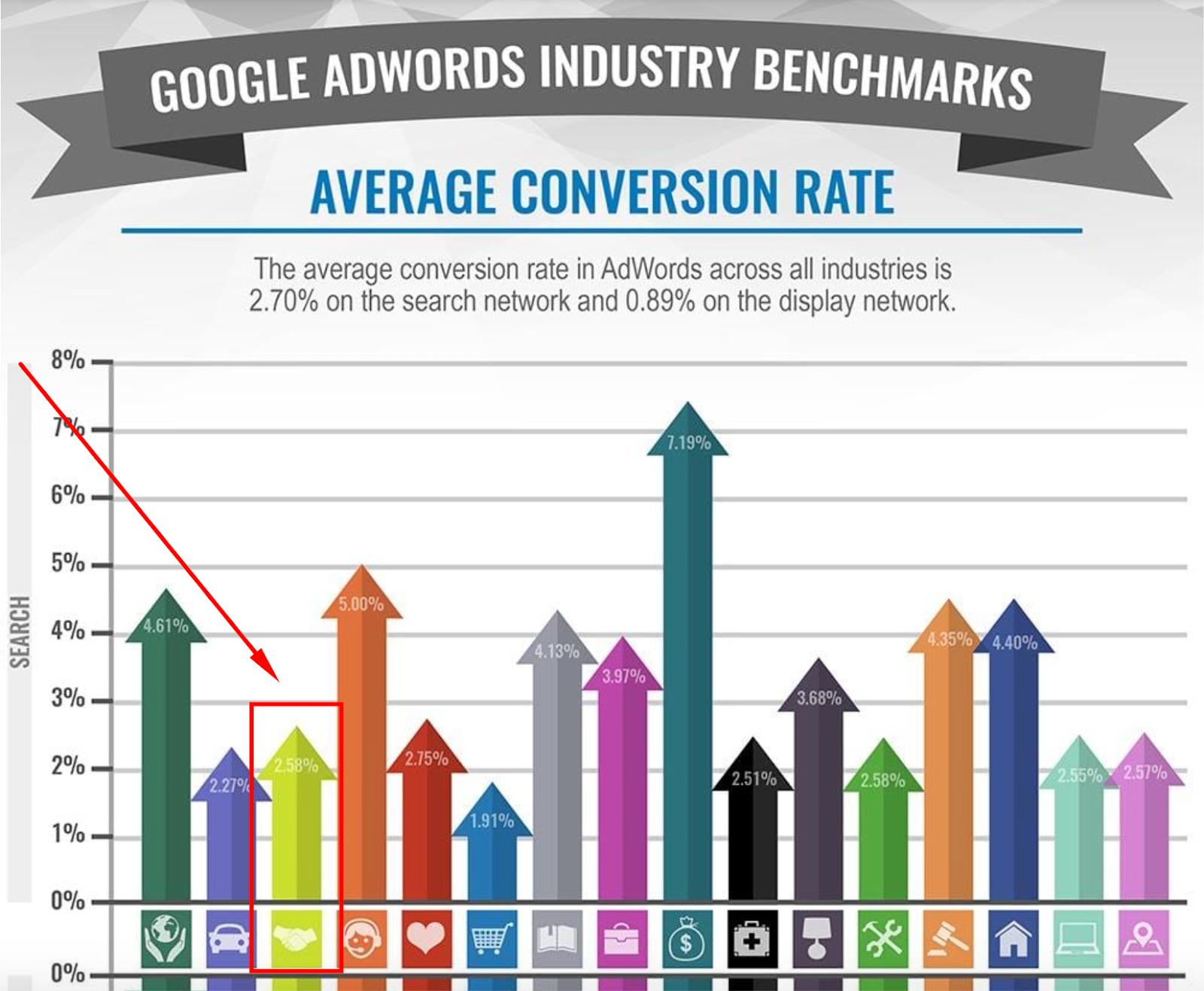
So, that’s about what you can expect when running your PPC campaign.
If your conversion rate is substantially lower than that, then something needs to be corrected.
Or, if it’s significantly higher than that, then you’re clearly winning.
How to Crank Up Your Conversions and Smoke the Competition
At this point, I’ve gone over three specific conversion rate benchmarks, and you know precisely what you’re dealing with in terms of competition.
For the rest of this blog post, I want to go over some specific techniques you can use to send your conversions soaring.
Conversion rate optimization is a wide umbrella, but here’s what you should focus on.
Start By Increasing Speed to Lead Time
How fast your reps respond to leads has a massive impact on conversions.
The faster the response time, the higher your conversion rate will be.
It’s really that simple.
One study even found, “78% of customers buy from the company that responds to their inquiry first.”
So, I can’t stress enough how important it is to do everything within your power to increase your speed to lead time.
Invest in Quality Content That Facilitates Lead Decision-Making
“55% of visitors spend less than 15 seconds on a website, even when it’s relevant,” writes Saif Abbas, digital lead at 2X. “This happens because when they seek information to make a decision, they want quick answers; if they leave, it’s because your content didn’t move them to the next step.”
To prevent leads from dropping out, you need to have a robust library of content that quickly answers their questions regardless of what stage they’re at in the sales funnel.
For instance, on Chili Piper, we’ve got an extensive resources section that contains eBooks, webinars, case studies, blog posts, product updates, videos, press releases, and best practices.
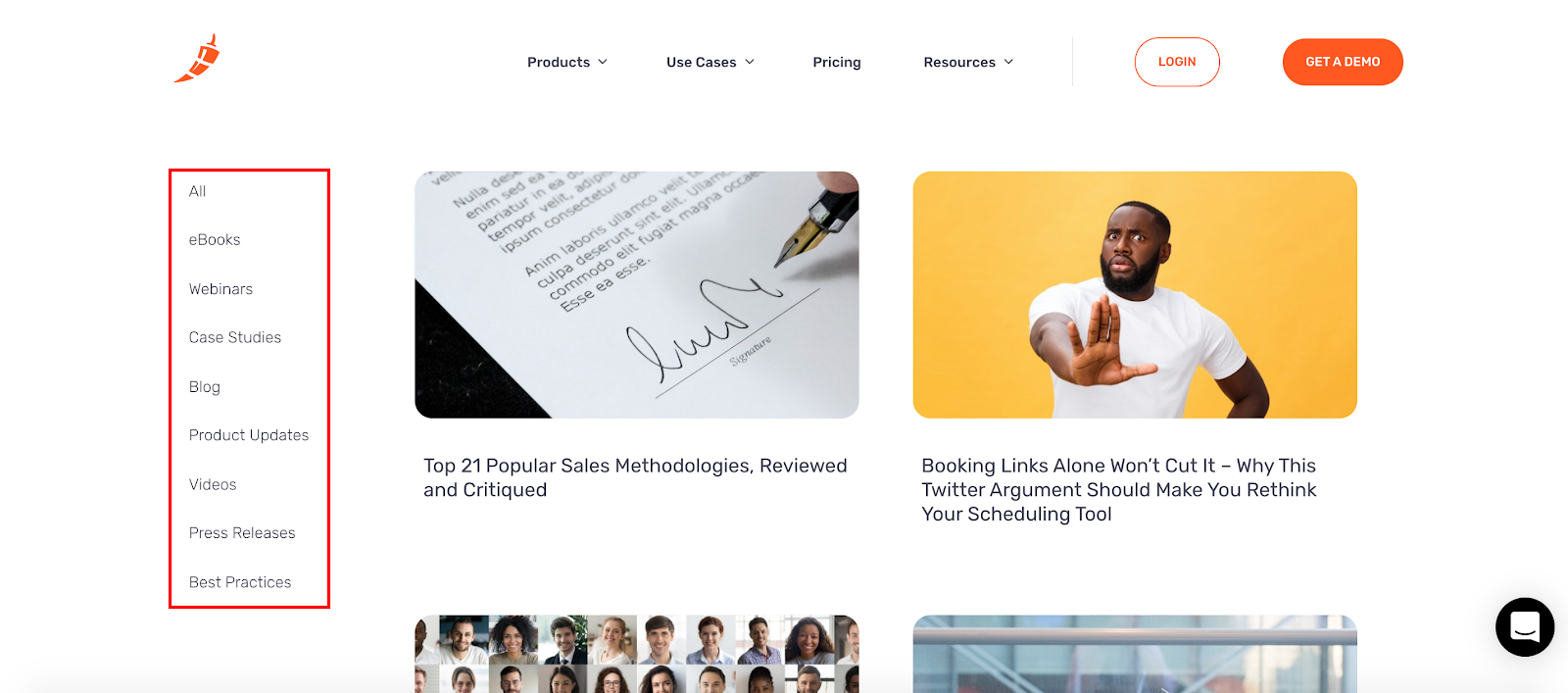
It’s all about making it super simple to find the right content to answer questions and help leads make smart decisions.
Do that effectively and a lot fewer leads will get off the line.
Perfect Your Demo
Another major factor that will determine your overall conversion rate is how good your demo is.
When your reps consistently nail it, leaving leads glowing with excitement, your conversion rate will inevitably increase.
On the other hand, if your reps consistently fail to hit their mark where leads walk away feeling underwhelmed or flat out disappointed, your conversion rate will drop.
Now, explaining how to give a proper demo is a whole other topic, and I don’t have time to dive into all of the details in this post.
But here are some best practices that should put you on the right track.
First, aim for longer demos where there’s an in-depth, engaging discussion.
Chris Orlob of Gong.io explains that “successful demo calls are 30.5% longer than unsuccessful demo calls (47 minutes versus 36 minutes).”

Next, reps need to follow a clear, logical structure where they seamlessly transition from topic to topic.
Here’s what the call structure of top performers looks like.
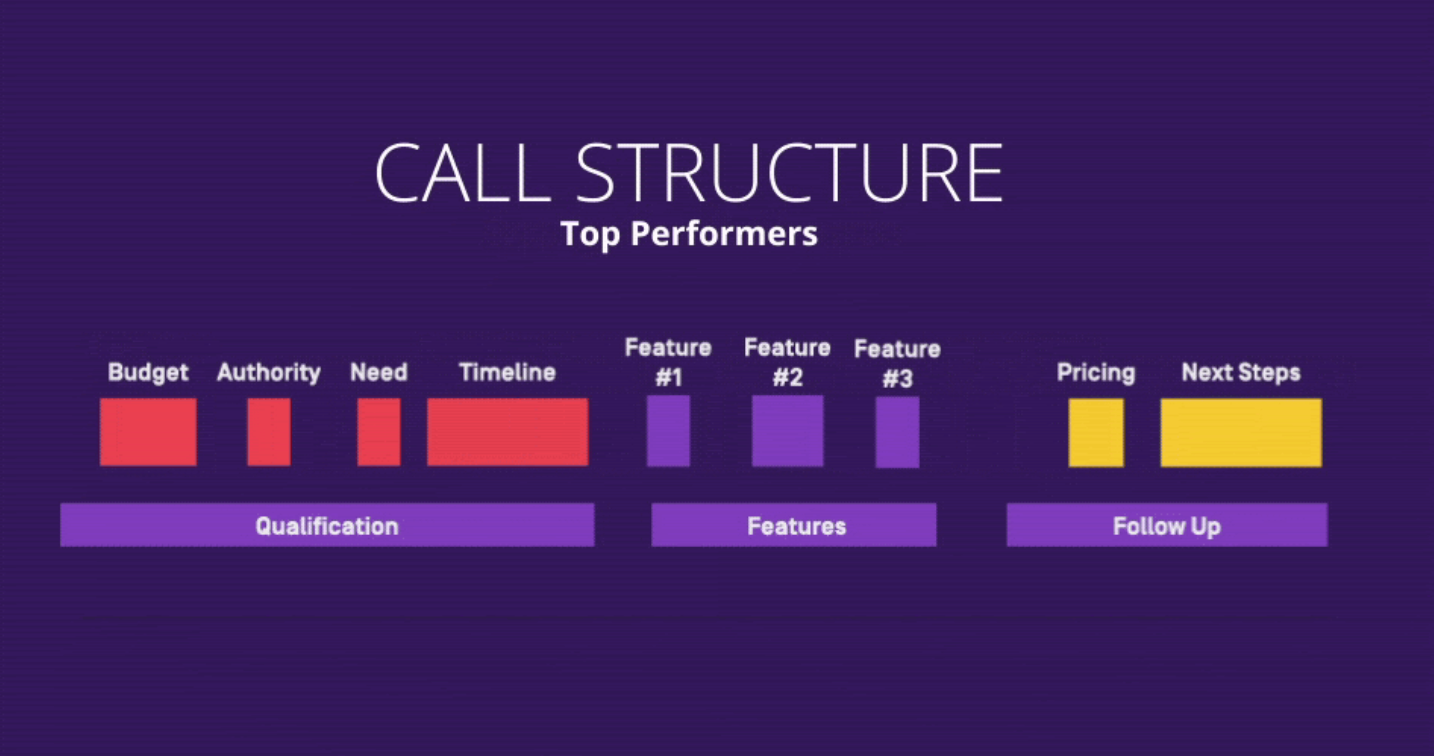
And here’s what the call structure of average/low performers looks like.
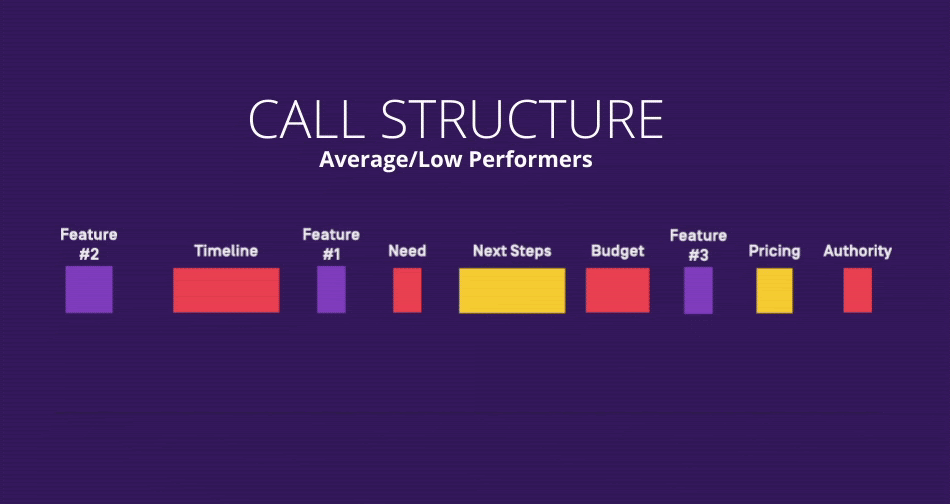
As you can see, the former is very sequential, while the latter is more disjointed.
Also, use the right talk-to-listen ratio, which according to Orlob is 65:35 for demo calls.
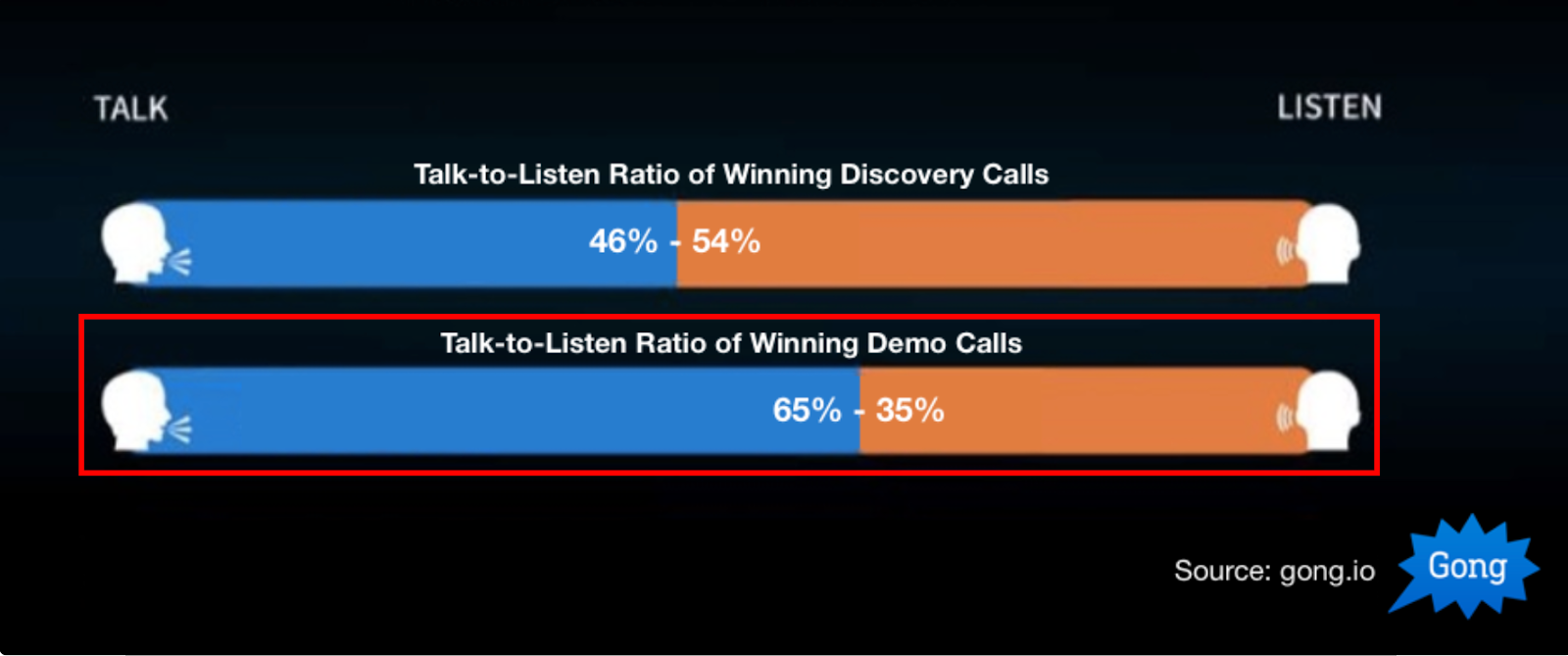
He elaborates saying “successful demos are ‘rep heavy’ in terms of who’s speaking the most, but they involve short ‘bursts’ of pitches that frequently start and stop, allowing the customer to chime in.”
It’s also important for reps to personalize the demo to the specific needs of each lead.
A demo should never be viewed as one-size-fits-all, and each individual lead’s industry, unique pain points, budget, and so on should be taken into account.
And finally, have reps use plenty of quantitative data.
Earlier I mentioned a video featuring Workato that discussed how they were able to convert 75% of their qualified inbound leads by using Chili Piper.
That’s the type of data you want to use in order to paint a clear picture for leads during a demo.
Rather than saying, for example, that your SaaS product will help their business grow, you would be much better off referencing a specific case study where one of your customers was able to grow their business by 20% within a year.
Conversion Rate Benchmarks FAQs
What’s the purpose of measuring conversion rate benchmarks?
To gauge how well your company is performing against competitors in your industry.
Conversion rate benchmarks help you determine if your conversion rate is better, worse, or the same as key competitors so you’ll know what changes (if any) need to be made.
What are the most important conversion rate benchmarks to know?
- Website – 2.23%
- Device – Desktop 4.14%, tablet 3.36%, and mobile phone 1.53%
- PPC – 2.58%
What are some effective ways to improve your conversion rates?
- Accelerate your speed to lead time
- Create a library of high-quality content to answer any and all questions your leads may have
- Improve your demo
Shooting for the Stars
Conversion rate is by far one of the most important metrics for B2B companies to pay attention to.
After all, it directly impacts your revenue and the long-term success of your company.
And while you obviously want to stay on track with your competitors, ideally you’ll go well beyond that and outshine them.
As Larry Kim, CEO of chatbot building platform MobileMonkey puts it, “You should be shooting for 10%, 20%, or even higher, putting your conversion rates 3x to 5x higher than the average conversion rate.”
Knowing current conversion rate benchmarks and following the advice I mentioned here should help you make that a reality and turn your sales funnel into a lean, mean conversion machine.
A version of this post originally appeared here.